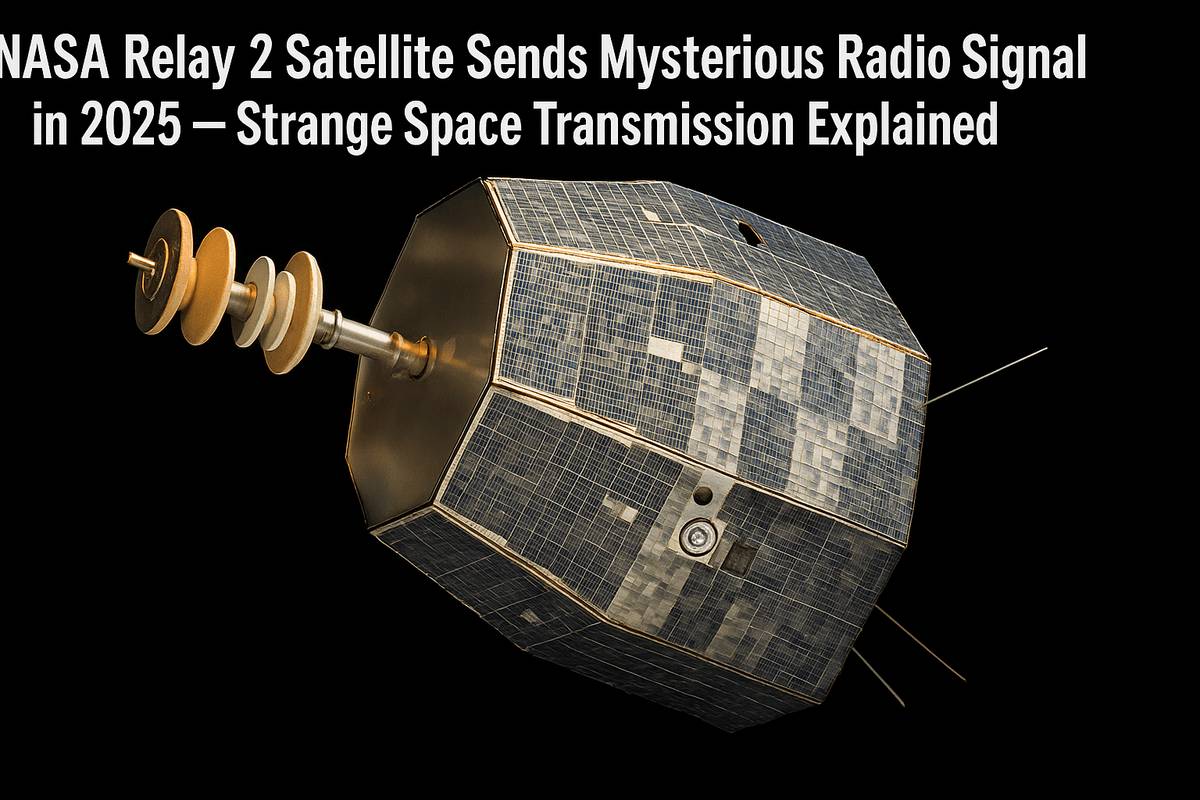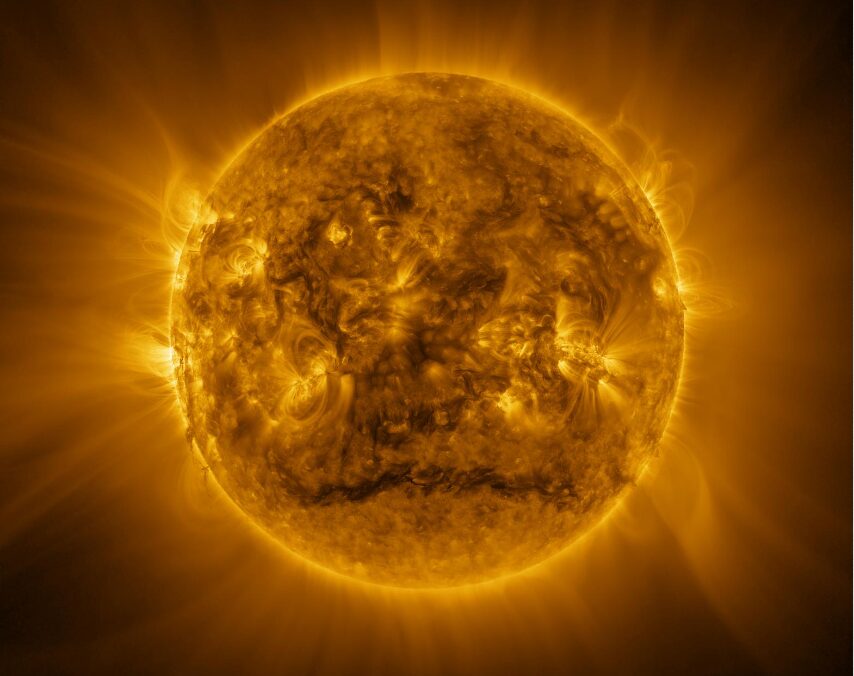Unexpectedly, scientists looked at the report of a mysterious radio signal coming from NASA Relay 2 satellite, which they believed had not been active for decades, in 2025. The Relay 2 satellite was part of a series of satellites launched in the 1960s and they had declared it inoperable decades ago. The satellite had been dormant for years without emitting any signal — until the scientists got this report about the radio wave that was being emitted. The bizarre radio wave caused some immediate concerns and questions from many of the space scientists and researchers that read the report. The scientists have since started the process of investigating what this strange signal may represent or originate from.
💡 Also Read: Did NASA Discover a Parallel Universe? The Truth Behind the Viral 2020 Space-Time Rumor
The History of NASA Relay 2 Satellite
The Nasa Relay 2 satellite was launched in 1964 as part of NASA’s early communications satellite program. Designed to relay television and radio signals across vast distances, Nasa Relay 2 satellite played a crucial role in pioneering space-based communications. After serving its mission successfully, the satellite was officially declared inactive and left to drift silently in Earth’s orbit.
For over half a century, Relay 2 remained dormant — a piece of space history silently orbiting our planet. However, in 2025, ground-based radio telescopes unexpectedly detected bursts of radio signals coming precisely from Relay 2’s coordinates.
What Was the Mysterious Radio Signal?
The signal detected was a series of repetitive radio bursts, each lasting a few seconds. Initial analysis revealed that the transmission pattern bore resemblance to old telemetry data from the satellite’s active days but contained no new or understandable messages.
Experts theorize that the signal might be caused by residual power in the satellite’s systems, or possibly a solar panel-generated charge unexpectedly activating dormant circuits. Another possibility under consideration is that a collision with space debris may have triggered short bursts of transmission.
This unusual activity was first reported by Smithsonian Magazine, highlighting how astronomers initially mistook the burst for a deep space event before identifying it as a signal from Nasa Relay 2 satellite.
Why Is This Signal Significant?
This phenomenon raises important questions about the behavior of defunct satellites in orbit. Relay 2’s unexpected transmission suggests that “dead” satellites might still pose unknown risks or opportunities:
- Space Debris Monitoring: Reactivated signals might provide a new way to track space debris and inactive satellites.
- Communication Interference: Unexpected signals could interfere with current space communications or scientific observations.
- Satellite Design Implications: Findings might influence how future satellites are designed to safely shut down and avoid unintended transmissions.
NASA is actively investigating this unusual transmission, as noted in the report by Space.com, where experts are monitoring Relay 2’s orbit and analyzing signal patterns.
💬 Related Post: Solar Storm 2025 Could Disrupt Satellites and Earth’s Power Grid
NASA’s Response and Investigation
NASA quickly assembled a team of experts to monitor the signal and gather more data. Collaborations with international space agencies and observatories are underway to better understand the cause and potential impact.
Scientists are carefully decoding the signal, comparing it with historical data archives, and monitoring Relay 2’s orbit for changes that might explain this sudden activity.
The Bigger Picture: Managing Space Traffic and Debris
As Earth’s orbit becomes increasingly crowded with satellites and debris, incidents like Nasa Relay 2 satellite mysterious signal highlight the urgent need for comprehensive space traffic management. Understanding how old satellites behave after decommissioning is vital for preventing collisions and maintaining safe, reliable space operations.
For more on the challenges of space debris and satellite management, visit NASA’s official website.
Conclusion
The mysterious radio signal from NASA Relay 2 satellite serves as a fascinating reminder of the complexities and surprises of space exploration. While this satellite had been silent for decades, its unexpected transmission in 2025 opens new avenues for research and highlights the challenges of managing humanity’s growing presence in orbit.
Frequently Asked Questions
It’s one of the early communication satellites launched back in the 1960s. Its main job was to relay TV and radio signals between continents. It was retired decades ago and hadn’t shown any activity — until a strange signal appeared in 2025.
Because a satellite that was supposed to be completely dead suddenly started sending out a radio signal. Scientists are baffled — it’s like hearing a voice from something that’s been silent for 60 years. That’s what makes the nasa relay 2 satellite event so mysterious.
It’s not considered dangerous, just unexpected. It’s likely due to leftover energy or maybe a jolt from space debris. Still, any unplanned signal from a long-dead object gets scientists’ attention quickly.
That theory has been floating around online, but there’s no real evidence to support it. Most experts believe it’s a natural event — unusual, yes, but not extraterrestrial.
Teams are tracking the signal and comparing it with data from the satellite’s original mission. This could help them better understand what happens to aging tech in space, especially when it doesn’t behave as expected — like in the case of nasa relay 2 satellite.




